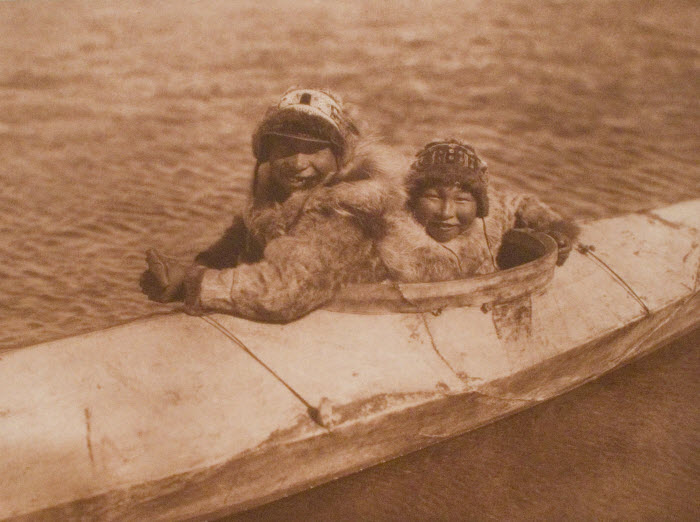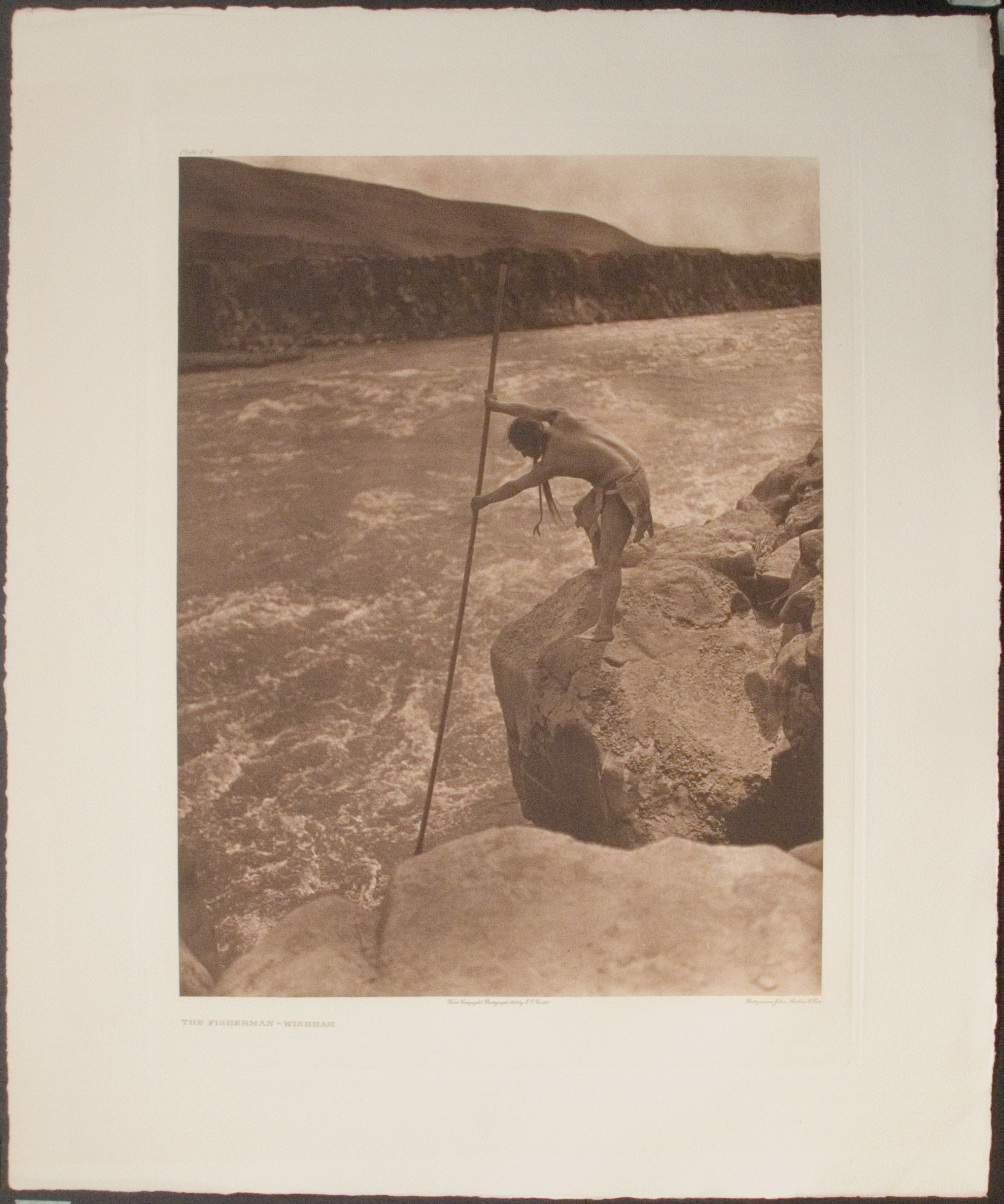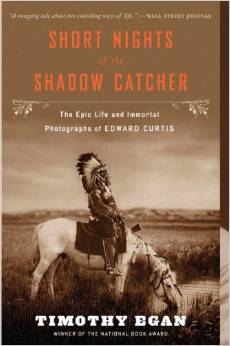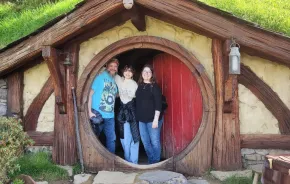
The 40 original Edward Curtis photogravures on display at the Whatcom Museum's new exhibit are a minuscule sample of the renowned photographer's lifetime of work. But they pack a punch. In the intimate space at the museum’s Lightcatcher building in Bellingham, a 90-minute drive north of Seattle, you can find yourself staring for long moments into the eyes of a proud, long-braided Nez Perce Chief Joseph or losing yourself in a vast Great Plains landscape.

From an artistic standpoint, the photogravures in the exhibit — titled Mingled Visions - Images from the North American Indian — are beautifully detailed. The process involved taking a photograph on a glass plate negative, chemically transferring it to a treated copper plate that was wiped with sepia-colored ink and printing limited editions on paper. Curtis, who began his career and family in Seattle, hauled those heavy glass plates along with his crew on their trips.
From a historical or ethnographic perspective, the images are heartbreaking. For more than decades starting in 1895, Curtis took some 40,000 photos; recorded 10,000 songs on Edison wax cylinders; and documented 75 languages from more than 80 tribes west of the Mississippi. Much of this would have been lost forever if not for Curtis and The North American Indian, the 20-volume work that he eventually published.
The Lightcatcher in downtown Bellingham is one of three Whatcom Museum buildings. It was designed by Seattle architect Jim Olson and features an enormous transluscent wall. As conditions like heat and humidity are well-controlled, since its opening in 2009, most traveling exhibits have been housed here rather than the museum’s Old City Hall. According to Whatcom Museum marketing director Christina Claassen, Bellingham is the last stop for this traveling collection from the Dubuque Museum of Art.
Engaging kids in the exhibit

The presentation of Curtis’ works is simple, with the photogravures mounted on plain white walls often with little explanation beyond their titles, name of the tribe and region. “Rather than geographical or chronological sorting, the installation is organized purely for artistic reasons,” explains Whatcom Museum docent educator Marilyn Burns. Tip: If you are interested in tracking where images were taken, make sure to grab the map at the exhibit entrance or take a picture with your phone of the giant map on the entrance wall.
What will kids be drawn to? If you have a child with a rebellious streak, then park her for a minute in front of the photogravure of Princess Angeline and explain the story behind the oldest and last surviving daughter of Chief Seattle; how she defied treaties and ordinances, refusing to be pushed out of town. She would carry rocks in her skirt to throw back at Anglo boys who would taunt and throw stones at her.
Curtis convinced her to take one dollar from him and sit in his studio for a photograph. This image from 1899, with her deep wrinkles, set jaw and cane in hand launched Curtis’ career, setting him on his course, what he would call, “the Cause,” to save native culture from oblivion.

In 1909 the man nicknamed the “Shadow Catcher” took a photograph, titled The Fisherman - Wishham, depicting a native using a long-handled dip net to catch salmon in the Columbia river. As Curtis wrote in Volume 8, at the right time of year, such a fisherman might have caught several hundred salmon in a few hours.
Kids tend to like things they can relate to, so parents might throw out questions; “How is that different from how people fish today?” Or for older kids, “What would it be like to be responsible for catching food to feed your family?”
Your children might be most drawn to images with other kids in them, such as Boys in Kaiak, of two smiling Eskimo boys taken by Curtis on Nunivak Island off the Alaskan coast in 1928.
Other must-sees include Bear’s Belly — Ankara, depicting a medicine man cloaked in the hide of a bear he has killed; and Honovi — Walpi Snake Priest.
Curtis worked for years to earn the trust of native peoples to be allowed access. He became enraged by their treatment and he became their advocate; among other things he helped form an Indian Welfare League that led to Congress passing the Indian Citizen Act in 1924.
In his biography, Egan recounts Curtis telling famed naturalist George Bird Grinnell, “I want to make them live forever. It’s such a big dream I can’t see it all.”
In his prime Curtis was celebrated — hobnobbing with the likes of Teddy Roosevelt and J.P. Morgan, among others — but the obsessive, self-taught anthropologist died a poor man.
Parents should know
Children 8 and over are most likely to be interested in the exhibit. (Third-grade school curricula in Washington state often include the study of native cultures.) But there is no disturbing content in the photogravures themselves, so nothing to avoid (such as at the Pompeii exhibit at the Pacific Science Center).
That said, the backstory behind what happened to Native Americans is filled with pillaging and tragedy, so parents of older children will have no shortage of opportunities for deeper discussion.
Of note for families with younger children, also on Lightcatcher’s main floor there is a hands-on children’s museum known as the FIG or Family Interactive Gallery. Access is included with the price of museum admission and can be a good “carrot” you can offer to restless little ones.
If you go ...
When: Mingled Visions is on show at the Whatcom Museum through May 10.
Where: The Whatcom Museum’s Lightcatcher building is at 250 Flora Street, there is metered street parking during the week. Weekend street parking is free.
Hours: - Wednesday, noon–5 p.m.; Thursday: noon–8 p.m.; Friday, noon–5 p.m.; Sat: 10 a.m.–5 p.m.; Sunday, noon–5 p.m.
Tickets: $4.50–$8; kids under age two free. Thursdays are $5 admission for everyone.
Tours: Free docent tours offered and Thursday, Saturday and Sunday at 1:30 p.m., call 360-778-8936 to make reservations.
Nearby treats: Within a few blocks, you can find a kid favorite in retro-themed Rocket Donuts. Or go gourmet cupcake with Icing on the Cake. Need a caffeine boost? Try either Woods Coffee or the Black Drop Coffeehouse. And for more substance, pick up unique-flavored pizza by the slice at Goat Mountain Pizza Company.
Other kid-friendly attractions nearby: In that same three-block radius of the Lightcatcher museum building, families can check out the SPARK Museum of Electrical Invention, which features interactive exhibits and a giant Mega-zapper Tesla Coil, as well as Mindport, a hands-on science museum that is fun, silly and good for kids of all ages.
More on Curtis and Native Americans: If you cannot make it to Bellingham, a great alternative is the Flury and Company gallery in Seattle’s Pioneer Square. With a collection of hundreds of Curtis originals and more than two dozen on the walls at any given time as well as other Native American art pieces, the gallery welcomes families and boasts a big open space for strollers.
Another perfect tie-in is Seattle Art Museum’s Indigineous Beauty exhibition (on view through May 17). From painted ceremonial masks and carved wooden combs to exquisitely beaded leather clothing, this collection spans many centuries of Native American items, some everyday, some ceremonial. Some contemporary Native art is also included, such as decorative bowls that combine traditional techniques with current styles.
 Learning about Curtis: If possible, read Short Nights of the Shadow Catcher, Timothy Egan’s National Book Award-winning book that details the dedication and sacrifices Curtis made to complete The North American Indian.
Learning about Curtis: If possible, read Short Nights of the Shadow Catcher, Timothy Egan’s National Book Award-winning book that details the dedication and sacrifices Curtis made to complete The North American Indian.
An excellent alternative for students as young as elementary school is the coffee-table quality picture book Shadow Catcher by Michael Burgan, now in paperback and selling in local bookstores (such as Village Books in Bellingham) for less than $10.











